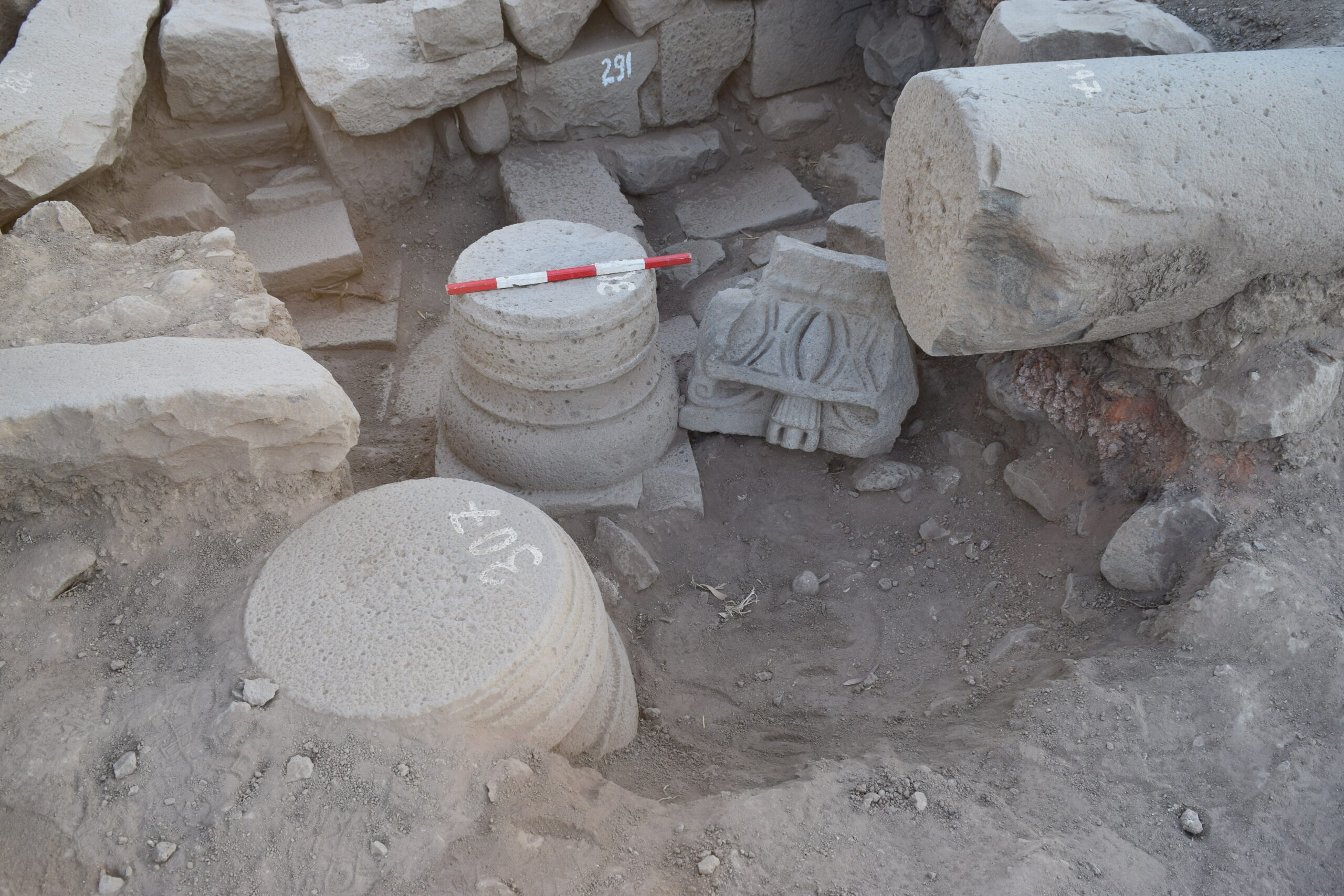Yehudiya Nature Reserve, Golan Heights – October 6, 2025 — In a remarkable archaeological discovery, researchers from the University of Haifa, the Israel Nature and Parks Authority, and Kinneret Academic College have unearthed a 1,500-year-old synagogue in the heart of the Yehudiya Nature Reserve in Israel’s Golan region. The find sheds new light on Jewish life in the Golan during the Byzantine period and underscores the deep, continuous connection of the Jewish people to this biblically significant land.
The synagogue, dating to roughly the 5th or 6th century CE, was uncovered during a targeted excavation following years of surveys that had documented scattered basalt architectural fragments in the area. The project, led by Dr. Mechael Osband of the University of Haifa’s Zinman Institute of Archaeology and Prof. Chaim Ben-David of Kinneret Academic College, revealed the long-sought structure after identifying an unusual concentration of column drums and decorated stones within the remains of the abandoned Syrian village of Yehudiya.
“Already at the start of the excavation, dozens of architectural fragments were uncovered, and later, to our surprise, the southern wall of the structure was revealed, with three openings facing Jerusalem,” said Dr. Osband. “This was the final confirmation that we had found the ancient synagogue itself.”
The newly discovered synagogue measures approximately 13 meters in width and at least 17 meters in length, built in the basilica style typical of ancient synagogues in the Land of Israel, featuring two rows of columns and benches along the walls. Among the many decorated artifacts uncovered were lintels, basalt columns, and ornamental stones, including fragments believed to be from the Torah ark and stones engraved with menorah motifs.
The Golan has a Jewish history;
— Adi 🎗 (@Adi13) October 5, 2025
Archaeologists unearth 1,500-year-old synagogue below abandoned Syrian village in Golan
A team from the University of Haifa and Kinneret College identify an ancient wall facing Jerusalem and some 150 synagogue items, including a stone engraved… pic.twitter.com/4cJ11ll9VH
“The discovery of the ancient synagogue at Yehudiya is clear evidence of Jewish settlement in the Golan as early as 1,500 years ago, when Jewish communities flourished here,” said Dr. Dror Ben-Yosef, archaeologist for the Israel Nature and Parks Authority. “These synagogues were not only houses of prayer but also centers of study and literacy—where sages taught Torah and Jewish knowledge to the entire community.”
The Golan Heights—known in the Bible as part of the region of Bashan—has deep Jewish roots stretching back thousands of years. The Book of Deuteronomy (3:10–11) recounts how Moses conquered the land from Og, King of Bashan, incorporating it into the territory of the tribe of Manasseh. During the Hasmonean period, the area was resettled by Jews and remained a center of Jewish life throughout the Roman and Byzantine eras.
Archaeological surveys across the Golan have revealed approximately 25 ancient synagogues, testament to a thriving Jewish presence between the 1st century BCE and the 8th century CE. Sites such as Gamla, Katzrin, and Ein Nashut display similar architectural and artistic features to the Yehudiya synagogue, including basalt construction and Jerusalem-oriented sanctuaries.
A magnificent 1,500-year-old shul (synagogue), whose location was previously unknown to experts, has been unearthed in an archaeological excavation within the Yehudiya Nature Reserve in the Golan Heights.
— Shiri_Sabra (@sabra_the) October 5, 2025
The discovery was announced on Sunday morning following an excavation… pic.twitter.com/ba9GkmcEhC
The Yehudiya synagogue was found within the remains of a modern abandoned village, where many of its ancient stones had been reused in later constructions. Excavators have now identified two courses of the southern wall built of ashlar stones—still standing after fifteen centuries—with three entrances perfectly aligned toward Jerusalem.
The project, a joint effort between the University of Haifa, Kinneret Academic College, the Hecht Foundation, and the Israel Nature and Parks Authority, aims to continue excavation and eventually open the site to the public.
“We intend to complete the excavation of the magnificent synagogue at Yehudiya and make it accessible to everyone who visits the reserve,” said Dr. Ben-Yosef.
The discovery of the Yehudiya synagogue is more than an archaeological achievement—it is a powerful reaffirmation of the enduring Jewish bond to the Golan and the broader Land of Israel. Each unearthed lintel and menorah carving stands as testimony that the Golan, far from being an isolated frontier, was once a vibrant center of Jewish worship and learning.




